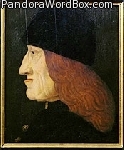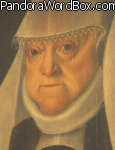Our websites offer information mostly for educational purposes with no intent to alter health care protocols nor to serve as a sole source of medical information.
Always seek the advice of your local health care provider.
|
× UKRAINIAN CHILDREN WITH DISABILITIES HAVE SPECIAL NEEDS |
PROGNATHISM - HABSBURG JAW
Gnathia Micrognathia Macrognathia Prognathia Mandible Chin Menton
Habsburg Autosomal Dominant Mutation (part I)
Gnat Gnow ... Gena Genus ... Gingiva ... Gum
The scope of "gnathos" from "gnathion", Greek for chin or "menton" in Spanish from Latin "mentum" flows into "cheek" or "gena" and further away to gnat, to imply "to chew" ... gnats "chew" human skin ... prominent chins can be referred to as "prognathia".
Prognathia - an autosomal dominant "trait" among members and ancestors of the Hapsburg Imperial families.
Micrognathia is a very common sign among otherwise average individuals - it is often a family trait, as well as a feature of numerous malformation syndromes.
Macrognathia or a large mandible or jaw, in particular, if gradual, is less frequent and can be a signal of acromegaly (excess of pituitary growth hormones). A prominent jaw (prognathia) and pendulous lower lip can be a "family trait" - among others, the Habsburg clan had many members with this sort of facial abnormality (Hapsburg jaw) - the trait was disseminated as an autosomal dominant gene mutation of high penetrance (virtually all individuals who inherited the mutation manifested its typical and recognizable impact on facial proportions illustrated by a large array of images described in companion notes).
It is debatable who was the first Habsburg (Hapsburg) ancestor affected (origin of the mutation - new or "de-novo" gene mutations are very rare). We are aware that historians often point as a starting point (origin of the mutation) an aristocratic family from Masovia (modern Poland). We did not see such evidence and doubt it is credible. Here we posted images of Maximilian I of Bohemia who had the mutation, as did his grandson Charles V of Austria or Carlos I of Spain. For some, it may be of interest to note that some generations later, Carlos II was very severely impacted by the mutation, presumably because he may have inherited a "double dose" of the mutation - one from his father and the second from his mother - obviously, both of his parents, who were related, had the mutation. Carlos II was more severely affected, but his intelligence was not compromised. Carlos II was epileptic, started walking late, was sterile (his two wives did not conceive), was bald, and died young at 38 years of age.
20210415 ww










